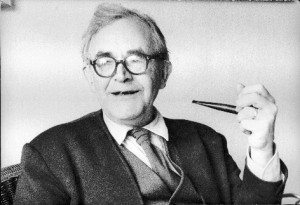httpv://www.youtube.com/watch?v=FVU_6GLZ-5Q&feature=related
“The Owl and the Pussycat”: listen right through to the end and you’ll be rewarded with some of the sweetest, most spontaneous and relevant literary criticism you’re ever likely to encounter
Today is Edward Lear‘s birthday (1812-1888).
Frye cites Lear to define the boundaries of satire in “The Nature of Satire”:
Again, we said that the humour of gaiety was the other boundary of satire. But as Juvenal truly said that whatever men do is the subject of satire, and that in consequence it is difficult not to write it, it follows that most humorous situations are at least indirectly satiric. Non-satiric humour tends toward fantasy: one finds it most clearly in the fairy worlds of Lewis Carroll, Edward Lear, and Walt Disney, in Celtic romance and American tall tales. Yet even here one can never be sure, for the humour of fantasy is continually pulled back into satire by means of that powerful undertow which we call allegory. The White Knight in Alice who felt that one should be provided for everything, and therefore put anklets around his horse’s feet to guard against the bites of sharks, may pass without challenge. But what are we to make of the mob of hired revolutionaries in the same author’s Sylvie and Bruno, who got their instructions mixed and yelled under the palace windows: “More taxes! Less bread!” Here we begin to smell the acrid, pungent smell of satire. (CW 21, 44-5)

